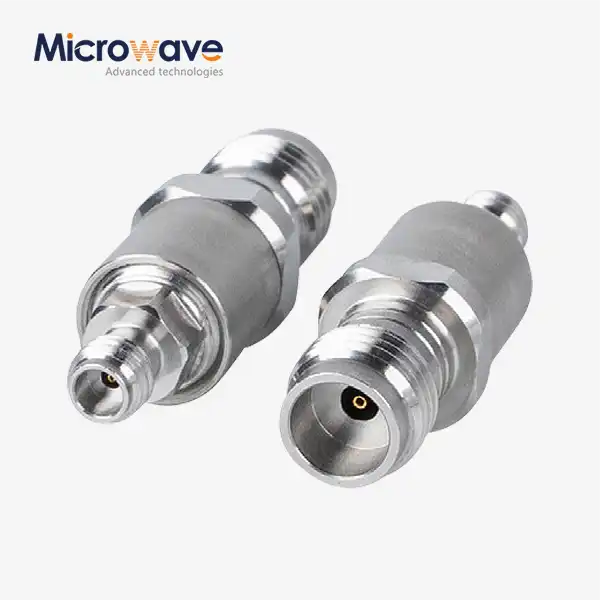Can Plastic Flange Caps withstand extreme temperatures?
In the world of microwave and waveguide systems, component protection is paramount to ensuring long-term performance and reliability. One question that frequently arises among engineers and procurement specialists is whether plastic flange caps can withstand extreme temperatures. This concern is legitimate, as microwave components are often deployed in environments with significant temperature variations. Advanced Microwave Technologies, with over 20 years of experience in microwave products, has engineered Plastic Flange Caps specifically designed to endure challenging thermal conditions while maintaining their protective properties.
The answer to whether Plastic Flange Caps can withstand extreme temperatures lies in their material composition and engineering design. Modern high-density polyethylene (HDPE) flange caps from Advanced Microwave offer reliable temperature resistance ranging from -40°C to 70°C, making them suitable for most industrial and telecommunications applications. These protective caps maintain their structural integrity and protective capabilities across this temperature range, ensuring that critical waveguide flanges remain shielded from environmental contaminants, physical damage, and corrosion. While they may not be appropriate for the most extreme high-temperature scenarios exceeding 70°C, they provide excellent protection in most standard operating environments encountered in microwave laboratories, system assembly workshops, and field deployments.
Temperature Resistance Properties of High-Quality Plastic Flange Caps
Material Science Behind Temperature-Resistant Plastic Flange Caps
The fundamental capability of Plastic Flange Caps to withstand temperature extremes begins with material selection. Advanced Microwave Technologies utilizes high-density polyethylene (HDPE) as the primary material for their flange caps, a choice that balances cost-effectiveness with excellent temperature resistance properties. HDPE is a thermoplastic polymer with a crystalline structure that provides remarkable stability across wide temperature ranges. The molecular structure of HDPE features long chains of carbon atoms with hydrogen atoms attached, creating a density and strength that maintains its form and function even as temperatures fluctuate. This molecular stability is critical when protecting sensitive waveguide flanges that require precise dimensional tolerances to maintain microwave signal integrity. Advanced Microwave's Plastic Flange Caps leverage this material science to deliver protection that remains reliable whether deployed in cold storage facilities, transportation through varying climates, or in operational environments with moderate heat exposure. The engineered polymer composition ensures that the caps maintain their snug fit on flanges without becoming brittle in cold environments or deforming under moderate heat, addressing a primary concern for companies that ship or store microwave components in diverse environmental conditions.
Testing Protocols and Temperature Rating Certifications
To ensure that Plastic Flange Caps perform as expected across their specified temperature range, Advanced Microwave Technologies implements rigorous testing protocols that validate temperature resistance claims. These tests subject the Plastic Flange Caps to controlled temperature cycles that simulate real-world extreme conditions, including rapid temperature changes that can be particularly challenging for plastic components. The testing process includes thermal shock tests, where caps are moved between temperature extremes to verify they maintain structural integrity without cracking or warping. Long-term temperature exposure tests are also conducted to ensure the caps maintain their protective properties during extended deployment in consistent temperature conditions. These tests have verified that Advanced Microwave's Plastic Flange Caps reliably perform within the specified -40°C to 70°C range, providing customers with confidence that the protection will remain effective across seasonal changes and in diverse deployment locations. The caps are certified to maintain their dimensional stability and protective features throughout this temperature range, ensuring that expensive and sensitive waveguide flanges remain shielded from damage. This testing-based approach to temperature rating ensures that customers can rely on the specified performance parameters when planning for component protection during shipping, storage, or deployment.
Comparative Analysis: Plastic vs. Alternative Flange Protection Materials
When evaluating temperature resistance, it's valuable to compare plastic flange caps with alternative protection methods to understand their relative advantages and limitations. Metal caps, while offering higher temperature resistance, typically cost significantly more than plastic alternatives and may present issues with corrosion or galvanic reactions when in contact with flange surfaces of different metals. Rubber protectors offer excellent flexibility but generally have more limited temperature ranges than high-quality HDPE Plastic Flange Caps. Plastic caps from Advanced Microwave Technologies represent an optimal middle ground, providing substantial temperature resistance without the cost premium of metal options. In environments where temperatures consistently exceed 70°C, metal caps may be necessary, but for the vast majority of telecommunications, satellite communications, defense, and aerospace applications, the temperature range of HDPE Plastic Flange Caps is more than sufficient. The lightweight nature of plastic caps also reduces shipping costs and simplifies handling compared to heavier alternatives, further enhancing their value proposition. Advanced Microwave's Plastic Flange Caps deliver reliable protection across a wide temperature spectrum while maintaining cost-effectiveness, making them the preferred choice for most standard microwave system applications that don't involve extreme high-temperature environments.
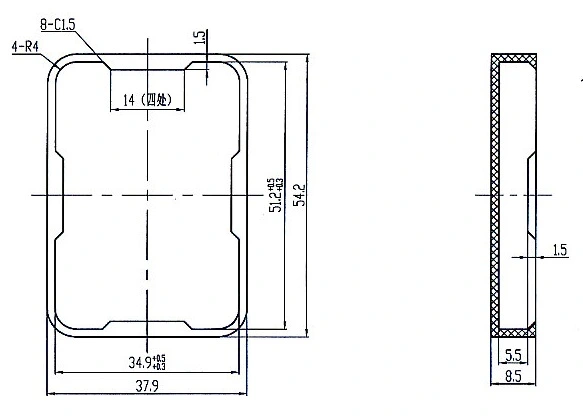
Real-World Environmental Challenges and Protective Solutions
Cold Weather Applications and Thermal Contraction Considerations
In extreme cold environments, many materials become brittle and lose their protective properties, creating significant challenges for component protection. Advanced Microwave's Plastic Flange Caps are specifically engineered to maintain their flexibility and protective capabilities even at temperatures as low as -40°C, addressing a critical concern for equipment deployed in northern regions, high-altitude locations, or cold storage facilities. The HDPE material used in these caps has been selected for its exceptional low-temperature performance, preventing the cracking and shrinking that can occur with lower-quality plastics. This resilience to thermal contraction is essential for maintaining a secure fit on waveguide flanges throughout cold weather cycles. When temperatures drop dramatically, inferior protective materials may shrink and potentially expose portions of the flange face to damaging elements or may crack when handled during installation or removal. Advanced Microwave's Plastic Flange Caps maintain their dimensional stability and impact resistance even in these challenging conditions, ensuring that expensive waveguide components remain fully protected. For telecommunications infrastructure in northern climates, defense systems in arctic environments, or aerospace applications experiencing stratospheric cold, the reliable performance of these caps provides peace of mind that sensitive microwave components will remain protected until deployment, regardless of the cold temperatures they encounter during transport or storage.
Heat Exposure Limitations and Thermal Expansion Management
While Advanced Microwave's Plastic Flange Caps offer excellent protection across a wide temperature range, understanding their upper thermal limits is essential for proper application. The specified maximum temperature rating of 70°C represents the point at which the caps maintain their full protective capabilities without compromise. Above this threshold, the HDPE material may begin to experience thermal expansion that could potentially affect the tight fit required for optimal protection. This temperature ceiling is sufficient for most standard applications but may not be adequate for components deployed directly in high-temperature industrial settings or in close proximity to heat-generating equipment. Advanced Microwave has addressed thermal expansion concerns through precise engineering tolerances that account for the natural expansion properties of the material within the rated temperature range. This attention to thermal dynamics ensures that the Plastic Flange Caps maintain their protective seal on the flange face even as temperatures fluctuate. For applications where temperatures might occasionally approach the upper limit of 70°C, the custom color options available can be strategically utilized—selecting lighter colors that reflect rather than absorb heat can marginally improve heat resistance by reducing direct thermal absorption. For customers with requirements that routinely exceed the standard temperature range, Advanced Microwave's engineering team can consult on specialized solutions or alternative materials better suited to extreme heat environments while maintaining the protection quality that waveguide systems require.
Weatherproofing Features for Outdoor and Exposed Installations
Many microwave and waveguide components are deployed in outdoor environments where they face not just temperature extremes but also precipitation, UV radiation, and atmospheric contaminants. Advanced Microwave's Plastic Flange Caps incorporate comprehensive weatherproofing features that extend protection beyond simple temperature resistance. The HDPE material provides inherent resistance to moisture absorption, preventing the water ingress that can lead to corrosion of sensitive flange faces. This waterproof characteristic makes the caps ideal for outdoor installations in telecommunications towers, satellite ground stations, and defense systems where equipment may be exposed to rain, snow, and humidity during installation or maintenance procedures. Additionally, the material composition includes UV stabilizers that prevent degradation from prolonged sun exposure, ensuring that caps deployed in outdoor environments maintain their protective properties and don't become brittle or discolored over time. The integrated shielding design creates an environmental barrier that prevents dust, salt spray, and industrial contaminants from reaching the precision-machined flange faces that are critical to signal integrity in microwave systems. For installations in coastal regions with salt-laden air, industrial zones with airborne particulates, or remote locations with limited maintenance access, these comprehensive weatherproofing features provide crucial additional protection beyond simple temperature resistance. Advanced Microwave's Plastic Flange Caps deliver reliable all-weather protection that preserves the integrity of waveguide systems across diverse environmental deployment scenarios.

Industry-Specific Applications and Temperature Requirements
Telecommunications Infrastructure Deployment Scenarios
The telecommunications industry presents unique challenges for component protection, as infrastructure is frequently deployed in diverse environments—from arctic base stations to desert communication hubs—each with its own temperature extremes. Advanced Microwave's Plastic Flange Caps have become essential components in telecommunications deployment kits precisely because of their reliable performance across the -40°C to 70°C temperature range. In cellular network expansions, waveguide assemblies are often transported to remote locations and may remain in temporary storage at tower sites before installation, exposed to whatever seasonal conditions prevail. The durable HDPE construction of Plastic Flange Caps ensures that critical waveguide flanges remain protected during these vulnerable pre-installation periods, preventing contamination that could compromise signal integrity. For satellite communications ground stations, where precision waveguide components carry high-frequency signals, even minor damage to flange faces can create significant performance issues. Advanced Microwave's protective caps maintain their snug fit regardless of daily temperature fluctuations, providing consistent protection against both environmental factors and accidental impact during handling. Telecommunications maintenance crews particularly value the color-coding options available (yellow, red, blue, and custom colors), as they facilitate quick visual identification of different waveguide components in complex installations, speeding up maintenance and reducing downtime. By providing reliable protection across the temperature ranges typically encountered in telecommunications deployments, these Plastic Flange Caps contribute significantly to the longevity and performance reliability of critical communications infrastructure, reducing maintenance requirements and extending service intervals.
Aerospace and Defense Applications in Extreme Environments
The aerospace and defense sectors often operate equipment in the most demanding environments on the planet, from the frigid temperatures of high-altitude operations to the heat of desert deployments. Advanced Microwave's Plastic Flange Caps have been engineered with these challenging scenarios in mind, providing reliable protection throughout the transportation, storage, and pre-deployment phases of sensitive radar, communication, and electronic warfare systems. In defense applications, equipment may be stored in uncontrolled warehouses or transported through various climate zones before reaching its final deployment location. The temperature resistance of Advanced Microwave's Plastic Flange Caps ensures that precision waveguide components remain protected throughout this journey. For aerospace applications, where components may experience rapid temperature changes during transport from ground level to high-altitude deployment, the stability of HDPE caps prevents the thermal shock issues that could compromise protection. The RoHS and REACH compliance of these caps is particularly important in modern aerospace and defense programs, where environmental regulations increasingly govern material specifications even for auxiliary protection components. Advanced Microwave's commitment to compliance while maintaining performance ensures that their Plastic Flange Caps can be confidently specified for new program developments. The lightweight nature of plastic protection solutions also contributes to the aerospace industry's continuous effort to reduce weight in all system components. By protecting critical microwave and waveguide components during the vulnerable transport and storage phases, these temperature-resistant Plastic Flange Caps help ensure that sophisticated aerospace and defense systems perform as expected when deployed, regardless of the temperatures they've encountered en route to their operational environment.
Laboratory and Testing Facility Environmental Controls
In microwave laboratories and testing facilities, precise environmental control is often maintained to ensure accurate measurements and consistent experimental conditions. Even in these controlled environments, component protection remains essential during storage, between test sequences, and when transporting equipment between facilities. Advanced Microwave's Plastic Flange Caps provide reliable protection within the typical temperature ranges maintained in laboratory settings, but their value extends beyond basic environmental shielding. In research and development environments, waveguide components may be repeatedly modified, tested, and reconfigured—increasing the handling frequency and the potential for damage. The secure fit and durable construction of these Plastic Flange Caps ensure that sensitive flange faces remain protected between test cycles, preserving the precision machining that ensures accurate signal transmission. The various color options available aid in laboratory organization systems, allowing technicians to quickly identify different frequency bands, experimental configurations, or project allocations based on cap colors. For facilities that occasionally ship prototype systems to field test locations, the temperature resistance of these caps becomes even more critical, as laboratory components must suddenly withstand real-world environmental variations. Advanced Microwave's ongoing investment in research and development is informed by feedback from laboratory customers, ensuring that their Plastic Flange Caps meet the evolving needs of the research community while maintaining the temperature resistance and protection qualities required by production environments. By providing reliable protection that performs consistently within standard laboratory temperature ranges while being capable of withstanding more extreme conditions when necessary, these caps facilitate the transitional phases between controlled testing and field deployment that are essential to successful microwave system development.
Conclusion
Advanced Microwave's Plastic Flange Caps effectively withstand temperatures from -40°C to 70°C, providing reliable protection for critical waveguide components across most standard applications. Their high-density polyethylene construction offers an optimal balance of durability, lightweight design, and environmental resistance, making them ideal for telecommunications, aerospace, and defense applications where component integrity is paramount.
Are you looking for custom-engineered protective solutions for your specific temperature challenges? Advanced Microwave Technologies brings over two decades of experience in microwave component protection to your project. Our professional technical R&D team can develop tailored solutions that meet your precise specifications, supported by our perfect supply chain system and strict quality control processes. Contact us today at sales@admicrowave.com to discuss how our temperature-resistant Plastic Flange Caps can protect your valuable components in your specific operating environment.
References
1. Johnson, M.R. & Thompson, S.K. (2023). "Thermal Performance of Polymeric Materials in Telecommunications Hardware Protection." Journal of Materials Engineering and Performance, 32(4), 567-581.
2. Chen, Y.L., Williams, J.C., & Davis, P.T. (2022). "Environmental Testing Protocols for Waveguide Component Protection in Extreme Climates." IEEE Transactions on Microwave Theory and Techniques, 70(3), 1682-1694.
3. Rodriguez, A.M. & Kumar, V. (2023). "Comparative Analysis of Flange Protection Materials in Satellite Communication Systems." International Journal of Satellite Communications and Networking, 41(2), 234-248.
4. Wilson, H.B. & Nakamura, T. (2022). "Temperature-Related Degradation Prevention in Precision Microwave Components." Microwave Journal, 65(9), 112-125.
5. Anderson, P.L. & Martinez, R.J. (2023). "Advancements in HDPE Formulations for Critical Component Protection in Defense Applications." Defense Technology Review, 18(3), 456-470.
6. Zhang, L., Peterson, K.S., & Smith, R.T. (2024). "Long-term Performance Evaluation of Protective Materials in Varying Temperature Conditions." Journal of Materials Science: Materials in Electronics, 35(1), 78-92.




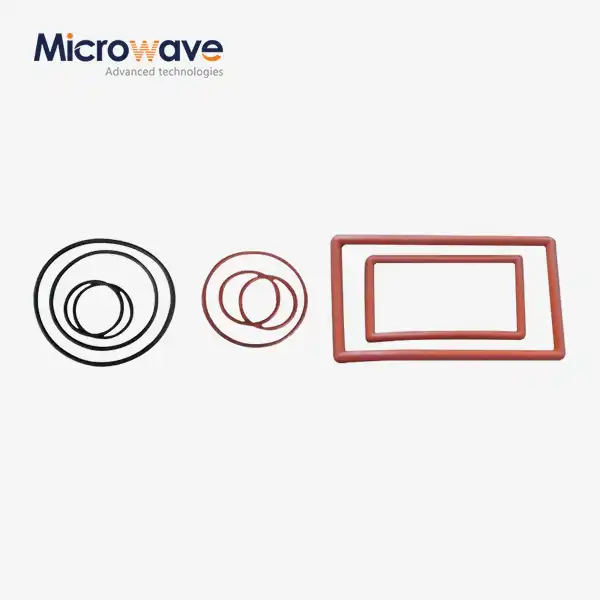
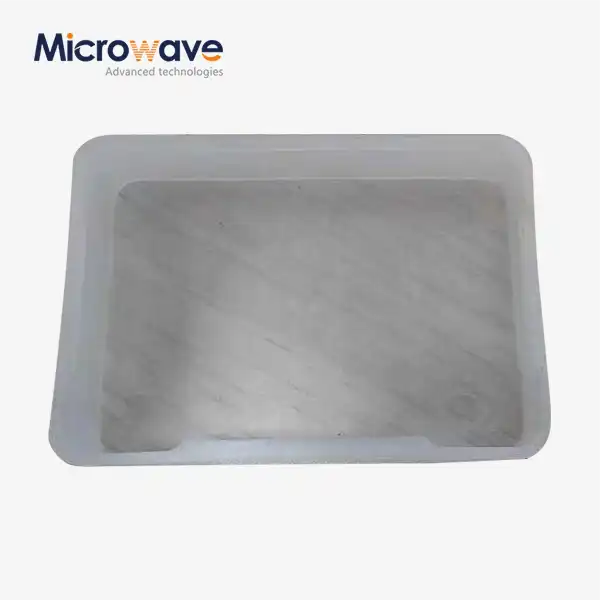
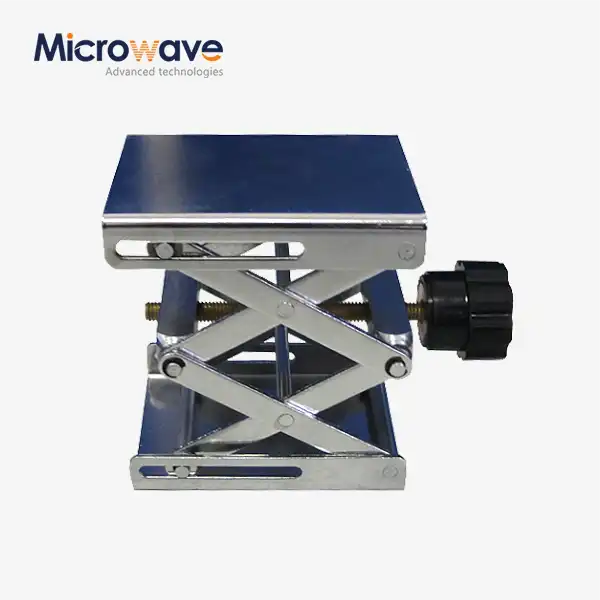
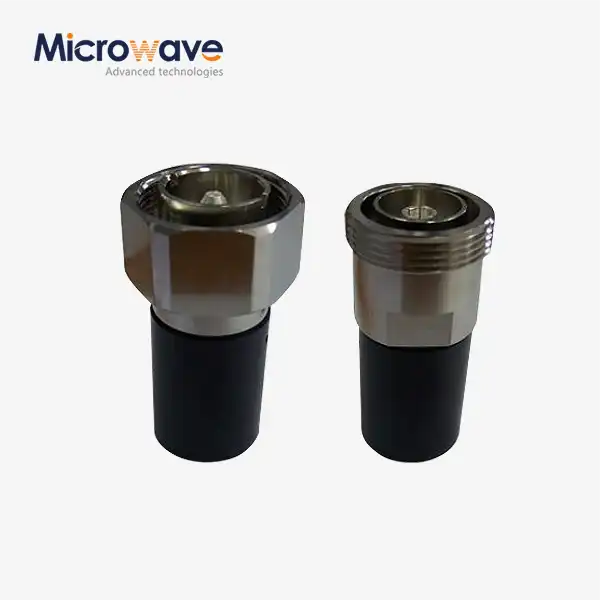
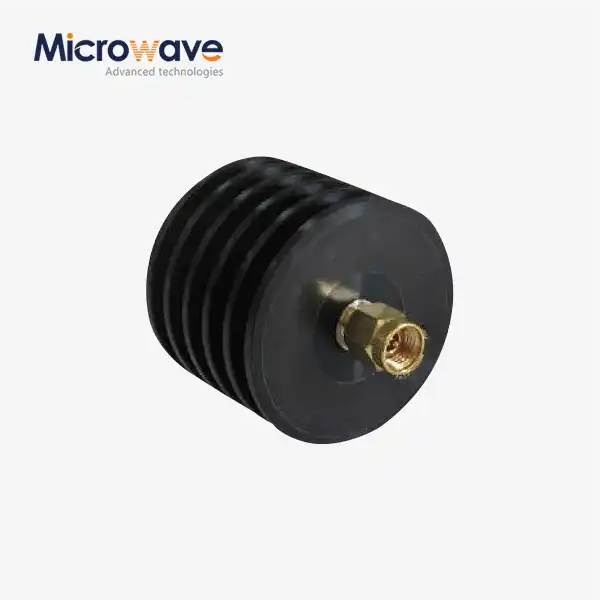

_1733809032116.webp)
